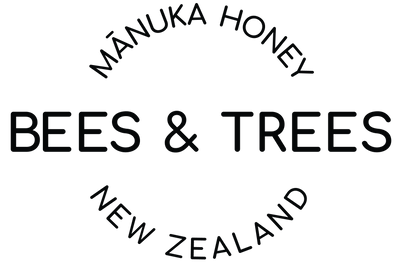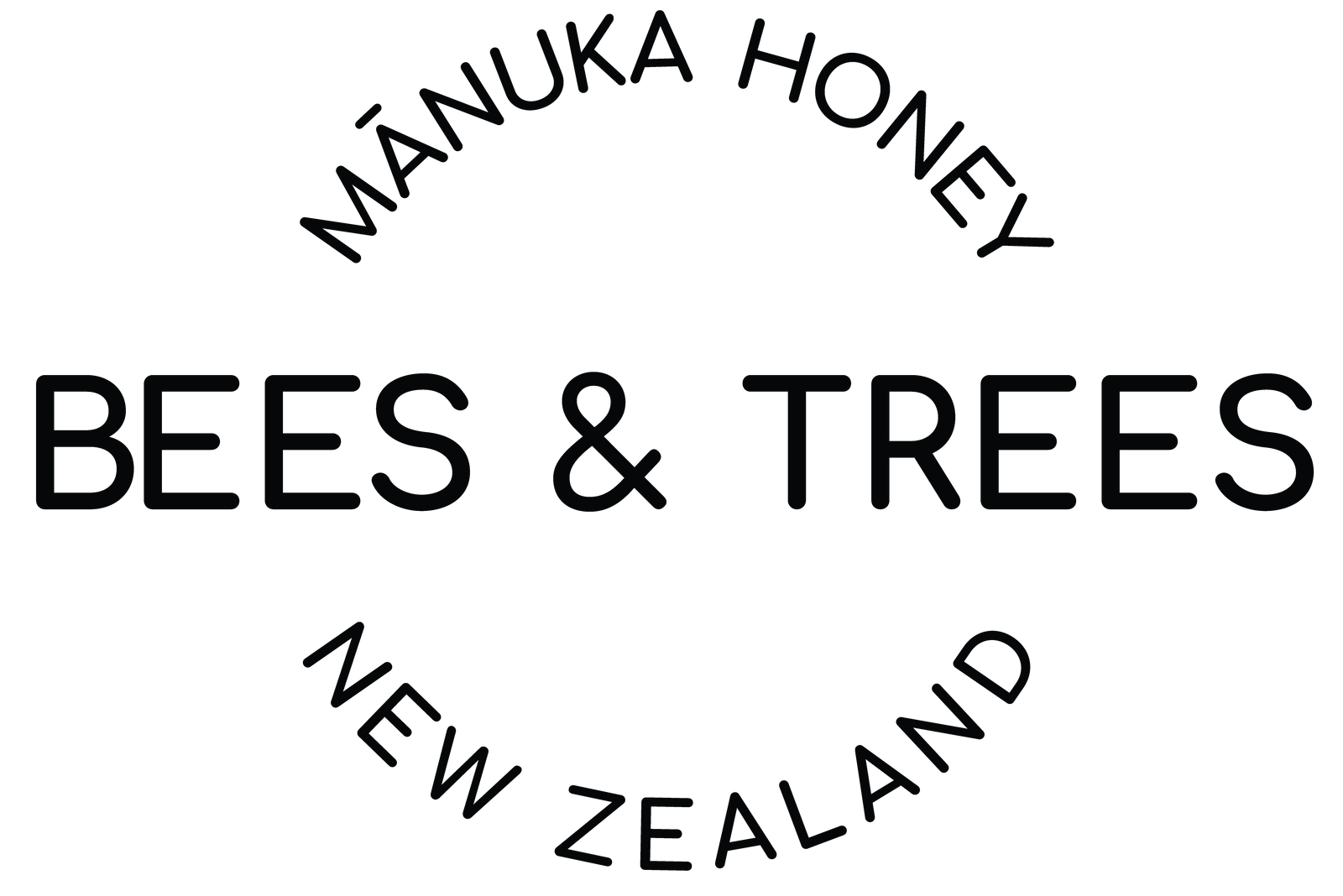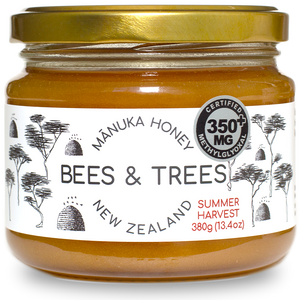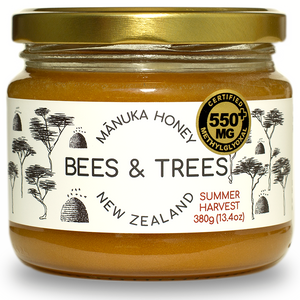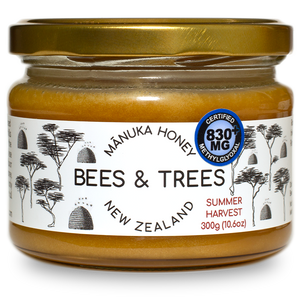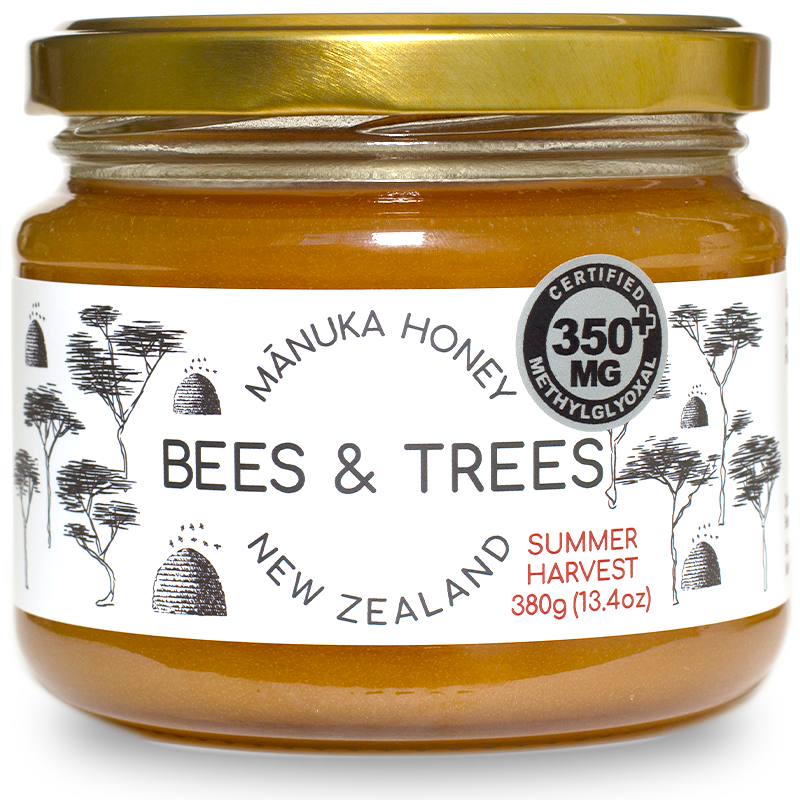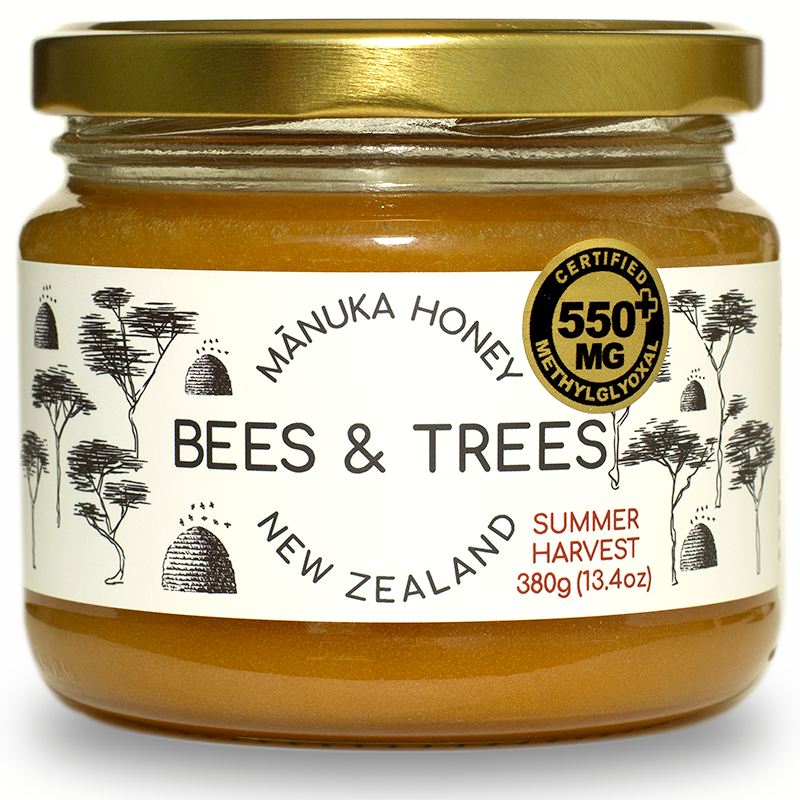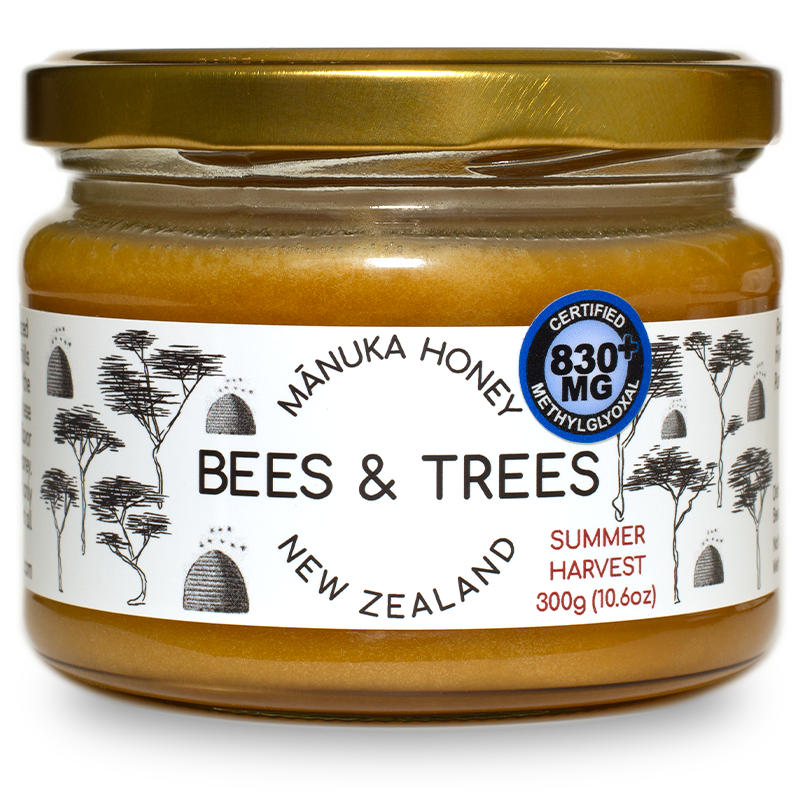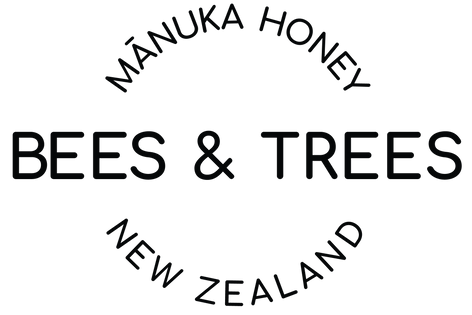Our Manuka and Other New Zealand Honeys
From Our Bees & Trees to a Jar in Your Home.
Laboratory Certified, Pure Manuka Honey.
(Buy 4 or more jars and save 10%)

Mānuka Honey Mid-Activity 350+ MGO/kg
$33.50
Mānuka Honey 350+ MGO/kg | Pure NZ Honey is ideal for health-conscious consumers seeking natural alternatives to incorporate into their wellness routines. This premium Mānuka...
View full product details
Mānuka Honey High-Activity 550+ MGO/kg
$47.50
Mānuka Honey 550+ MGO/kg | Pure NZ Honey is perfect for those looking to experience the remarkable qualities of authentic Mānuka honey. Known for its...
View full product details
Mānuka Honey Founder's Reserve 830+ MGO/kg
$65.00
Mānuka Honey Founder’s Reserve 830+ MGO/kg | Our Founder’s Reserve Mānuka Honey offers an ultra-high 830+ MGO value, making it ideal for those seeking the...
View full product details
Native New Zealand Honey
$15.00
Bees & Trees™ Native Honey | Pure New Zealand Raw Honey is a limited-production honey harvested from New Zealand's untouched native forests. Produced by bees...
View full product details
Mānuka Honey 3 Jar Bundle
$130.00
Looking to try each of our different Mānuka Honey offerings? This bundle is the way to go! Our 350+MGO is great for your daily wellness...
View full product detailsManuka honey is unique because it is only created by bees that forage the flowers of the Manuka tree in New Zealand. Manuka honey is also the only honey that contains the natural organic compound, Methylglyoxal (MGO), which contributes to its amazing health and wellness properties.
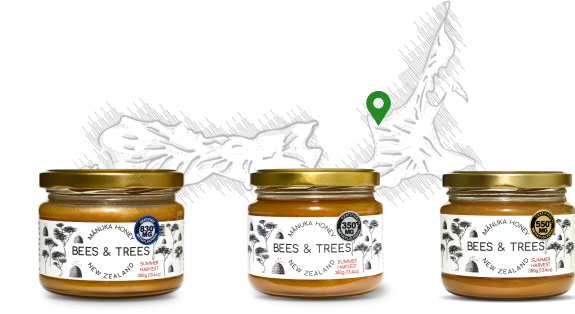

MGO in Manuka honey refers to Methylglyoxal, a naturally occurring compound that contributes to the honey's unique antibacterial properties. It's measured in milligrams per kilogram (mg/kg), indicating the honey's potency. The higher the MG concentrations, the more potent the honey.
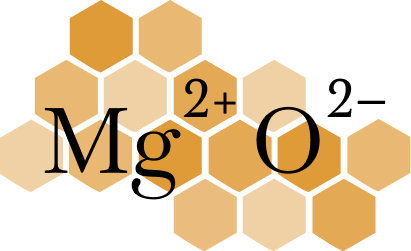

In the early 1990s, Dr. Peter Molan from Waikato University in New Zealand was studying the ‘peroxide activity’ attributed to honey's antibacterial properties. He found that unlike the ‘peroxide activity’ of other types of honey, which was easily destroyed by exposure to fluids, heat, and sunlight, Manuka honey had a different, more potent, and more stable property that he called “non-peroxide activity” (NPA).
Later, Professor Thomas Henle from the Technical University of Dresden in Germany set out to isolate what in Manuka honey was exhibiting this potent and stable antibacterial effect. He was able to isolate the methylglyoxal (MGO) as the compound producing the NPA.
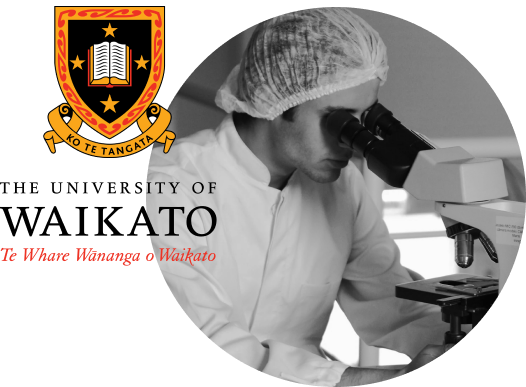


There’s only one rule to remember when buying Manuka honey: the higher the MGO value, the more potent and effective the honey is believed to be for medicinal purposes.

Manuka honey is more than just a sweet treat; its unique properties offer a range of health benefits. Here's how it can make a difference in your life:
Immune System Support
Mānuka honey’s anti-microbial properties may strengthen your body’s natural immune defense by fighting off disease and free radicals.
Cold & Flu
An abundance of scientific and anecdotal evidence suggests that Mānuka honey may help reduce symptoms of viral and bacterial infections, and even help you prevent or combat these infections directly.
Gut Health
Mānuka honey’s anti-inflammatory and antibacterial properties may promote healing and sooth digestive tract issues.
Skincare
Mānuka honey kills bacteria and can balance your skin’s pH levels, which may leave you with a healthier and clearer complexion.
Infection and Wound Care
Doctors and hospital emergency rooms around the world embrace Mānuka honey as topical treatment to fight infection and support healing of bodily wounds and burns.
Natural Wellness
Mānuka honey is one of nature’s great superfoods. This amazing natural resource is valued the world over for its vast assortment of health and wellness benefits.
Learn more about Manuka Honey’s benefits here.

There are only two legitimate, industry-recognized, and independently verifiable ways to label Manuka Honey:
- Manuka Honey should be labeled with the actual MGO test results (in mg/kg). We label our honey with the actual MGO results and make our test results publicly available (example here).
or - Manuka Honey should be labeled with a rating on the UMF (Unique Manuka Factor) scale. UMF is trademarked and must appear on the label.
When you see anything else on a label of honey purporting to be Manuka honey, you should steer well clear. Examples of what continues to show up on labels include: “Active”, “Bio-Active”, “Total Activity”, “K-Factor” plus a number typically ranging from 5+ to 20+. When labeled this way, the company is trying to intentionally mislead the consumer into thinking they are getting a high MG (or legitimate UMF) honey when in reality, they are typically getting a very low concentration or low activity (i.e., low MG value) honey.
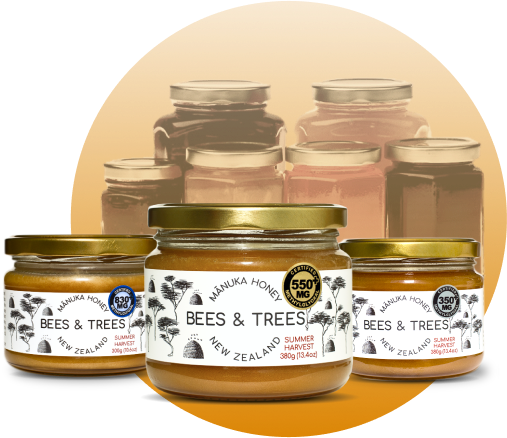

You can buy authentic New Zealand Manuka honey directly on our website. At Bees & Trees, we are committed to producing the best quality Manuka honey. We harvest our honey in small batches to ensure high quality, minimally process it, and then pack it. We also publish our Methylglyoxal test reports on our product pages so you can shop confidently.
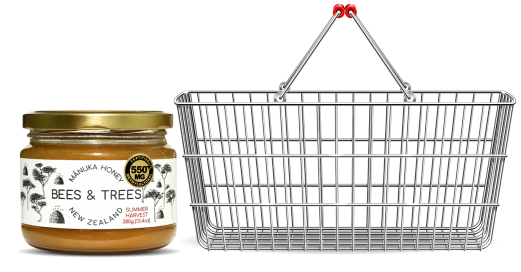

Manuka honey is more expensive than other types of honey due to its limited supply from New Zealand and its unique wellness benefits. At Bees & Trees, we produce our own honey and sell it directly to you the consumer, bypassing traditional distribution and large retail chain profit margins. On a pricer per MGO per ounce, we are typically 30-50% lower than many of competing brands.
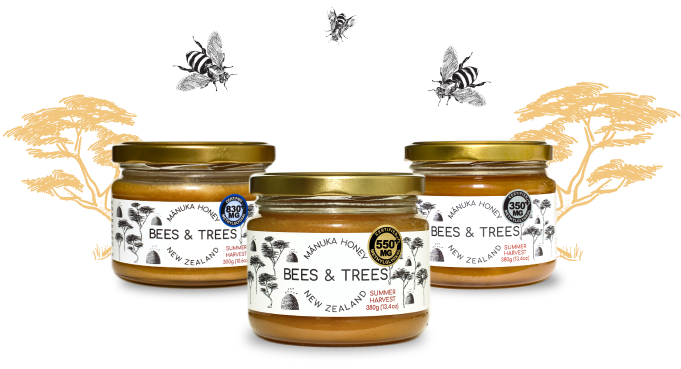

What Our
Customers Think?
Let customers speak for us
Ask Us
Anything
Have questions about Mānuka Honey
or Bees & Trees?
Send us your question and we'll happily respond!
Learn
We take pride in educating you about Mānuka Honey and Natural Wellness.


Manuka Honey for Dogs: The Ultimate Guide to Healing, Digestion, and Overall Wellness

